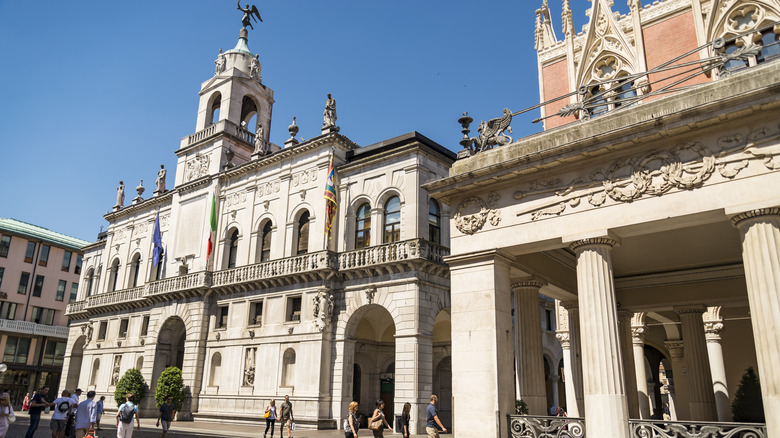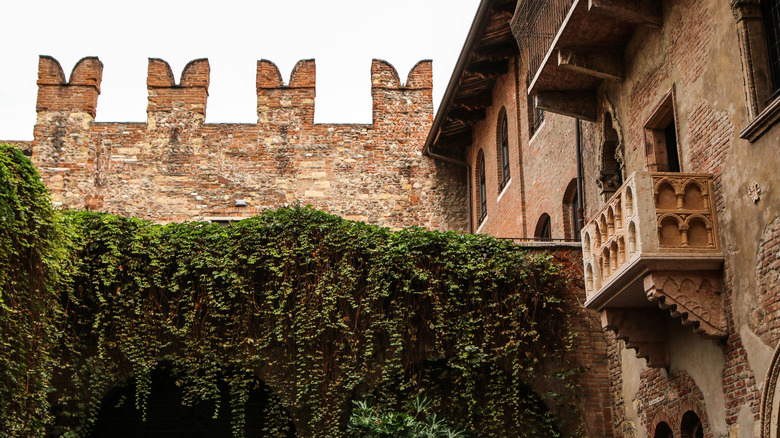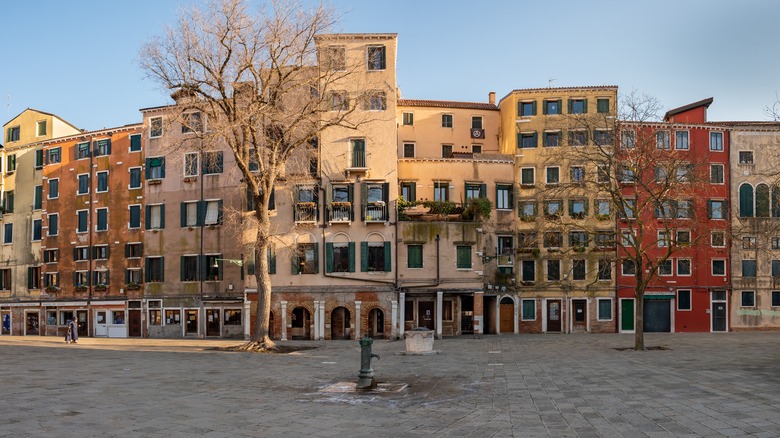These Beautiful Italian Towns Are A Must-Add To Any Shakespeare Lover's Bucket List
William Shakespeare's literary works affected not just entertainment, but also major historical accounts and even language itself. Shakespeare enthusiasts will find plenty of destinations in his home country of England, such as the Globe Theatre in London or his hometown of Stratford-upon-Avon. However, many of his plays take place elsewhere, especially northern Italy. Immerse yourself in Italian culture while following the stories of some of Shakespeare's most beloved characters.
"The Taming of the Shrew" is one of Shakespeare's comedies. The antics of this play occur in Padua, a historic yet perhaps lesser known city in northern Italy. When it was written in the late 1500s, the English saw Padua as influential in academics given that it housed one of the oldest universities on the continent. Key characters in "The Taming of the Shrew" are in Padua for educational endeavors. You can envision these characters while visiting the University of Padua (Università degli Studi di Padova), which was established in 1222. There is even a museum in Padua dedicated to education. Check out the Education Museum (Museo dell'Educazione) for historical artifacts related to schooling like old desks, calligraphy, and books.
Visit Juliet's House and Romeo's House in Verona, Italy
From literal (yet modern) retellings like the 1996 film "Romeo and Juliet" to similar plot themes in "West Side Story," William Shakespeare's tragedy "Romeo and Juliet" is quite steeped in pop culture. Shakespeare's version takes place in Verona, Italy. While the play is fictional, a visit to Verona nearly convinces you that "Romeo and Juliet" was a true story.
One of Verona's popular spots is Juliet's House (Casa di Giulietta), a dreamy building where the medieval Capello family possibly called home. The all-important balcony was added in the early 20th century. You can admire the home's courtyard or purchase a ticket online to go inside and see items used in Franco Zeffirelli's 1968 version of "Romeo and Juliet."
Romeo's House (Casa di Romeo) has not been so converted into a tourist attraction, but is still a beautiful example of a 13th century home and its façade features a plaque with the quote from the play's famous balcony scene. Other "Romeo and Juliet" locations include the Basilica di San Zeno Maggiore, where the ill-fated couple got married, and the Volto Barbaro, where Tybalt killed Mercutio (behind the Mazzanti Houses, northwest of Piazza dei Signori). On a nearby building, there's even a bronze relief (a flat sculpture) of these two characters fighting.
See Moor and Jewish influences in Venice, Italy
Venice is a bucket list destination for history buffs and Shakespearean enthusiasts alike. "Othello" begins in Venice and the titular character is a Moor, meaning he was a Muslim from North Africa. During the Middle Ages, the Moors settled primarily in Spain and Portugal and left lasting influences. However, knowledge of the Moors in Venice is evident partly because statues from this time period in the Square of the Moors (Campo dei Mori) are wearing turbans and other clothing that reflect the Moor culture.
In "The Merchant of Venice," protagonist Antonio cannot repay a loan that he received from a man named Shylock in Renaissance Venice. Antonio finds himself in court over the ordeal, and these court scenes take place in the famous Doge's Palace, a must-visit for anyone going to Venice. Shylock was Jewish, which leads Shakespeare fans to the Jewish Ghetto. While we often think of ghettos as downtrodden and associated with the Holocaust, the Jewish Ghetto in Venice became quite affluent during the Renaissance and remains a beautiful part of the city. This area of Venice features the Jewish Museum (Museo Ebraico di Venezia) showcasing Jewish history, including artifacts from the Jews' plight under Nazism and fascism.


